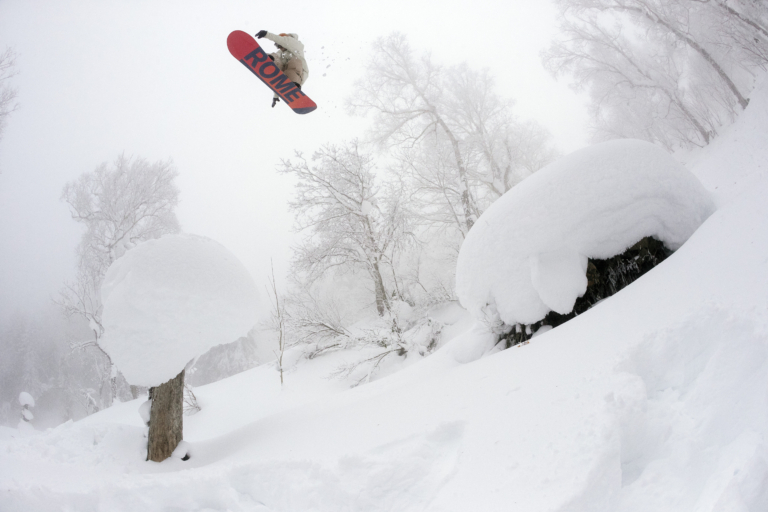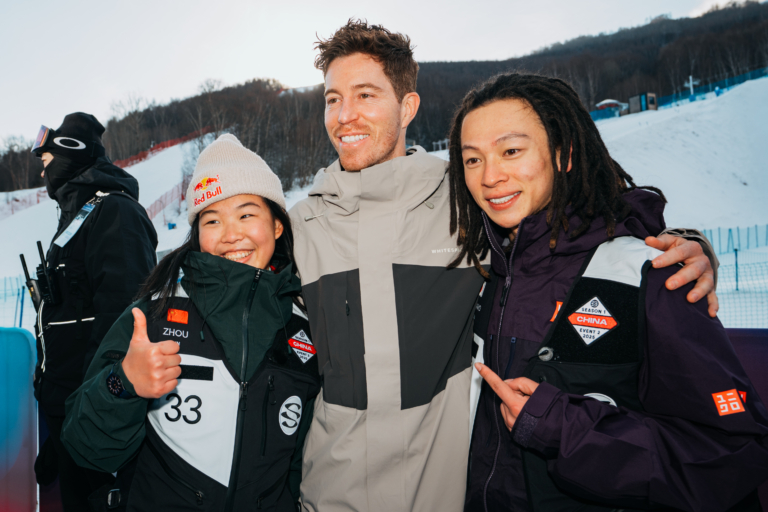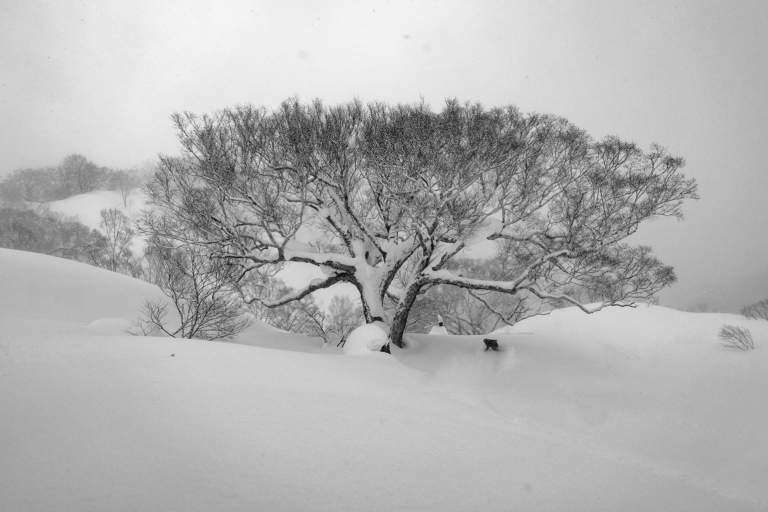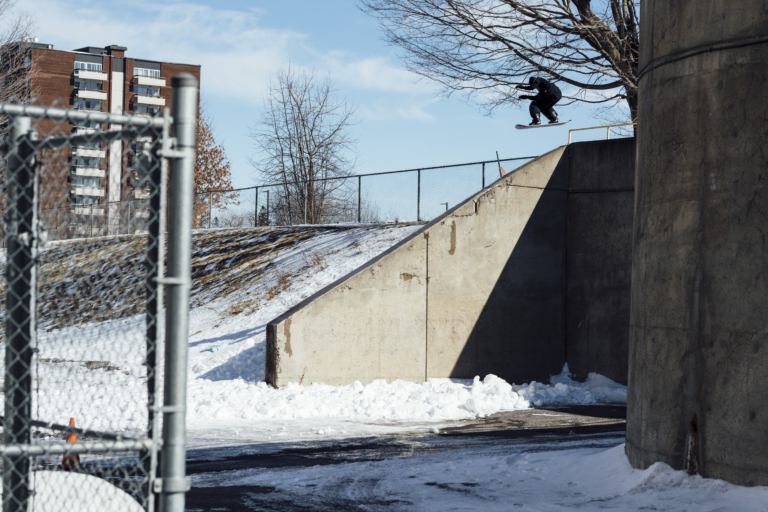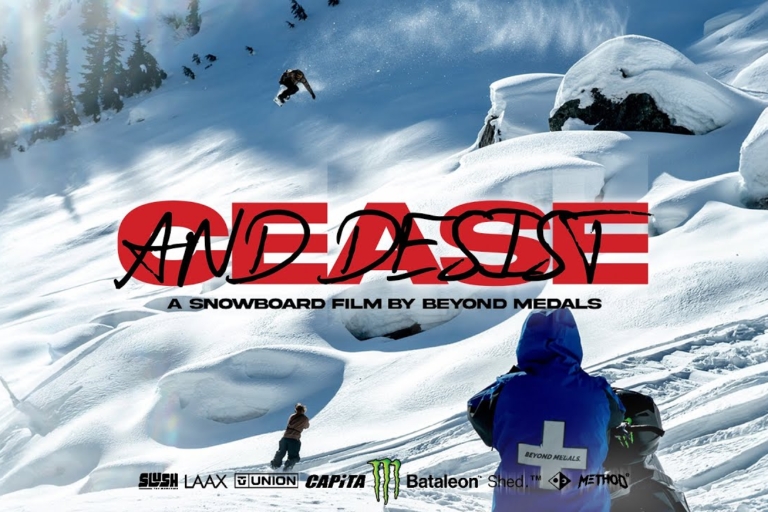Interviewed by: Patrick “Sarge” McCarthy
Early on in our relationship, I knew Forest Bailey was special. Years ago, 686 did a team trip to Colorado and it was my first time hanging and riding with Forest. After destroying the resort all day, Forest migrated down to the parking lot and boardslid the entrance gate. It did not matter what was in front of Forest, he just ripped it to pieces.
From East Coast rail jam warrior to one of the world’s most well-rounded, all-terrain vehicles, Forest has stayed in constant evolution and risen to the occasion year after year. Over all this time, from being teammates to now being his team manager, I have gotten to watch Forest grow up and become a man. He has gracefully taken on the responsibilities of adulthood, all while remaining that same kindred spirit with a youthful vigor for life—this quality always leaves me in awe.
I am truly blessed to have shared all this time with Forest, knowing that we have helped each other grow in different ways during our lives. I look forward to more adventures together, sharing the moments and shining within. I have shared my life’s knowledge with Forest, and he has taught me even more along the way. I am confident we have not yet seen the best of Forest. The one thing I know is that he will be dropping in, committed, focused, and driven to be the absolute best version of himself for many seasons to come.
Where are you at right now, Forest?
Just down here in California at the 686 offices looking at some future outerwear. Going to take the train down south tomorrow to hang with my buddy Blake [Paul] for a couple days.
So, you going to hit some skateparks down south or get in the water and surf?
Hopefully a little bit of both. As you know, it’s nice to get out of the Northwest for a little in the fall—enjoy some warm weather for a few days.
Living up in Oregon, you get to spend plenty of time skating and snowboarding, almost all-year long. What else have you been doing in your free time?
Skating and snowboarding definitely take up a lot of my time. Doing graphic work for Gnu, plus designing clothes for 686, I stay pretty busy. When I’m not working on that stuff, I like to focus on paintings or spend time at the coast learning to surf. I get to be with my little fam—my dog Neo and my lovely girlfriend Nadia. I love my free time.
You’ve been designing your own collection with 686 for eight years now and you’re fully immersed in the process from start to finish. Correct me if I’m wrong, but being creative in this way really seems to go hand-in-hand with snowboarding for you, as in you are fulfilled by using your creativity in a multitude of ways?
It all feels intertwined for sure, but it really all spawned from snowboarding. Being a pro snowboarder has given me an outlet for all my other creative endeavors. Without snowboarding, who knows if I’d even be making art or designing clothes.

Where have you gotten the inspiration for your collection over the years?
Inspiration can come from anywhere: a random cool fit you see on the street, a jacket in a thrift store, a pair of pants with a good fit or a cool stitch, a snowboard photo from twenty years ago—it’s endless. I think from early on I had a vision for how I wanted to look while on my snowboard. I was passionate about design and really fought to get 686 to let me start working with them to design outerwear. Big thanks to Mike West for giving me that opportunity.
What has inspired you lately when it comes to the look and feel of your 686 gear?
With 686 I’ve dived deeper into silhouettes, making sure everything fits exactly how I want it to, making sure materials are functioning but also comfy to wear, and as always, adding little hits of detail to make every piece feel special. Once the fits are good, then I can fully focus on the art and the design concepts.
Your art has appeared on both your outerwear and pro model snowboards. When did you first get into painting and making art?
I come from a family of creatives, so it’s always been around, but I didn’t really dive in until I was 20. Since then, it’s been a constant in my life, doodling every day, expanding on doodles I like and trashing ones I don’t. Ten years of that and I really started to develop something that feels truly like myself. Painting or any medium is the same. I started by playing and learning, then it expands and evolves naturally over time.
What sort of people, places, things, etc. inspire your painting?
Inspiration can be drawn from anywhere, and sometimes you don’t even know where it comes from until later on. Usually for me, it begins with a thought, which becomes a doodle, which becomes a painting. A big goal in painting, for me, is to make an image that is fun, playful, and exciting for your eyes and your brain. I hope a painting or a board graphic I make could bring someone joy.
What direction have you been taking your painting lately?
It’s quite sporadic. Sometimes I’m motivated and sometimes I just don’t have the energy. Lately I’ve been really excited about it, trying new things and exploring new ideas. I just painted a mural in Portland at The Courts, a skate spot up there. I really would love to get some work together and have an art show, hopefully next summer. I’m about to move into a new art studio with my friend Jack this fall; stoked to have a space away from home to go and create.
What brought you to Portland? It’s been your home base for how long?
Mt. Hood brought me to Oregon as a kid and then I just kind of ended up here. I’ve lived in Portland for around eight years now. I have a great community of friends and I love being able to snowboard, skate, and surf for most of the year.
What does an average day in Portland look like when you’re not snowboarding? Paint the picture for the readers.
I like to take it slow when I’m home. Probably wake up at 8, let Neo out, make coffee for me and tea for Nadia, make us a smoothie. Nadia writes every morning and I draw. Probably check my email and make some eggs around 11 or 12 and then take Neo on a walk. Work a bit more and then go skate in the evening. Meet back up for dinner. This is average, but I like to switch it up and keep every day fresh.
You’re a bit of an old soul to me, where do you think this comes from?
Ha, I guess basically always hanging out with older people and becoming independent at a young age— being thrown into pro snowboarding forced me to take on a lot of responsibility. I was so hungry as a kid to get out of Vermont and make something out of snowboarding. So much of being a snowboarder is being someone who people enjoy hanging with and someone that can hang. I was just a 16-year-old stoner, but honestly that got me where I am today, being able to casually hang with people twice my age and not seeming like some little, clueless kid. Understanding when to have fun and when to be serious.
You left Vermont when you were 17 and moved across the country to Lake Tahoe. What were things like for you then?
It was a wild time. I was so young and my snowboard career started really taking off. I was traveling all the time and living on my own, financially able to take care of myself. I really had tunnel vision and was hyper-focused on boarding. But snowboarding also was an escape for me at that time. My parents were going through a shitty divorce, and rather than have to choose who to live with, I was able to rent a house with friends. I think because so much of my parents’ relationship troubles were based around money, I really wanted to be able to support myself. They weren’t going to be able to pay my way through college, so I needed to find my own route.
Did you feel a lot of pressure during that time? Not from other people, but just internally on yourself to get to a point where you wanted to be, in terms of supporting yourself and being independent in that way?
I did and I honestly still do. There’s a lot about being an adult and managing life that I still need to learn. Coming from a family that couldn’t really give me that financial knowledge, I’ve relied a lot on friends. It’s like if my main goal is to snowboard forever, then I better figure out how to manage my money, because snowboarding is expensive.
Has there been a point where you felt like you had made it—or just had the program you wanted dialed?
There have been some incredible milestones that I’m very proud of, but my mind has always been more focused on what’s next, rather than “making it.” Snowboard career or not, I’m on a lifelong snowboard journey and I’m excited to see where else it will lead me. I’ve been snowboarding for twenty-five of my thirty years on planet Earth and I hope I’ll get another twenty-five.
When you look back on when you were first getting traction in your career, moving out West, getting involved in film projects—what was important to you in terms of your snowboarding at that time?
I really wanted to prove myself. Street snowboarding was growing and evolving so fast and I wanted to carve out my place within it. I grew up riding halfpipe and park and would get bummed when people would call me a “rail kid.” I hated that label because it put me in a box. That motivated me to challenge myself and learn to snowboard on any and all terrain. Looking back, I’m proud to have come up as a “rail kid.”
Now when you look at your snowboarding, how has what is important to you evolved? I guess, what drives you now?
Back then I think I was more competitive; l wanted to be the best. Now I just want to be my best. I want to enjoy this snowboard journey and I want to continue to push myself and progress at my own pace. I want to find the perfect balance between all the things I love in life.
Filming has been a constant throughout your career. What approach do you find the most fulfilling?
Filming snowboarding and being on a successful trip getting clips—those can be some of the most fulfilling times, where things just really feel like they’re working. But honestly for me, more important than that is the fulfillment snowboarding has given my life through taking me to new places and introducing me to new people. I can’t imagine a life that I’d rather be living.
Connection and community are both such big parts of snowboarding, for sure, and for you, the relationships that you have forged seem to have guided the brands that you work with, as well. I mean, you have really longstanding sponsors, like Gnu and 686. Can you talk a little bit about how you align with the companies you work with?
I have been so blessed to have aligned with a few great companies early on in my career who really let me have creative control over my snowboarding. Brands that trusted me to follow my path and not push or pull me around. Businesses that have strong roots in snowboarding and are still managed by the same people they were started by. Gnu snowboards are made in America. I can drive up to the factory and talk to the people who build my boards. 686 is one of the few snowboard brands that is still independently owned. I’ve been working with both these brands since I was 16, so it really does feel like family.
What are your thoughts on Instagram and how it is shaping the landscape of being a professional snowboarder?
I see Instagram as a tool. It’s incredible to be able to connect with humans all over the world. But I think it’s important for people and brands to remember that Instagram fame and raw skill are two different things. In my opinion, skill is more important, but the people who can do both, mad respect. I have a hard time promoting things on Instagram unless it’s something I really believe in or a brand that I truly support or supports me. I want to be a pro snowboarder, not a pro Instagrammer.
You are well-known for your rail riding talents, but I look at you as one of snowboarding’s true ATVs. At what point did you start to branch out into the backcountry and how was that experience?
I got my first backcountry set up at around 19 or 20. It was the season we were filming for Givin One. That winter, I spent time in the mountains of Colorado and Washington. I was always super nervous during that era because I really felt clueless in big mountain environments. I stayed close to the crew and always tried to pick up on any little bits of knowledge I could. I grew up riding a lot of halfpipe and park in Vermont so once I learned to land in powder, filming came pretty easily.
Thoughts on a street trip verses a backcountry trip?
I’ve said this a million times, but I really do love it all the same. For me, going on a street trip, I really need to open my mind to new ideas and find ways to keep it fresh and creative. It’s also nice being in a city or town to be a little more involved in the culture of a place outside of the mountains and resorts. The goal for me now is to take that creative energy that street snowboarding has given me and bring it to the mountains. It’s nice get away from the city, cozy up with friends in a cabin, make meals, and wake up early and rip. I feel so healthy when I get into a routine like that. As I get older, I am really gravitating to spending more time in the mountains and trying to expand my mountain knowledge, but I’ll always be down for the streets.

As you spend more and more time out in the backcountry, what kind of preparation have you found helpful?
I’ve been filming snowboarding in the backcountry for ten-plus years and I feel like I’ve barely scratched the surface of understanding mountain safety. I’m really excited to continue to learn about how to be smart, safe, and prepared while in the mountains. I’m going to take a class that Pat Moore puts on up in Canada this December. For anyone who is truly interested in getting into the backcountry, I highly suggest taking a mountain safety class first.
You spent much of the past season at Baker riding with Parker White, who has been a good friend of yours since you lived in Vermont. How has it been filming with him?
Parker and I have been skating and riding together since we were little kids. In ways, I feel we’re twin flames, hailing from Vermont, both moving west at young ages and eventually ending up in the Northwest. We’ve always motivated and pushed each other and now we get to rip together again, like when we were little kids. It’s so sick. Check out Parker’s Nothing videos.
After a couple years of uncertainty with COVID, what does it feel like to get back into some travel? Does it help you appreciate doing that more?
To be honest, I’ve only been on a couple flights since the beginning of COVID and it feels strange. COVID forced me to take a break from traveling and it was nice to hang out closer to home last winter. I miss traveling, but it still feels uncomfortable. I want to be respectful to the people around me.
Are you vaccinated?
I am. I got vaccinated as soon as I could. Seemed to me like the safest and most socially responsible move. If getting myself vaccinated could help someone else, I’m all for it.
Man, I am all about that. It’s important to evolve as humans no matter what, don’t you agree?
Exactly. Change is constant, and I will happily adapt how I act and speak to make others feel more comfortable. Words can hurt people, even if they aren’t meant to, and I don’t want to hurt anyone. Language and slang are constantly changing; it’s important to me to stay versed on what is okay to say and what isn’t. It’s really as easy as that. I’m proud that snowboarding is making some steps towards being a more inclusive activity, but I think we have a long way to go, as snowboarders and as humans.





